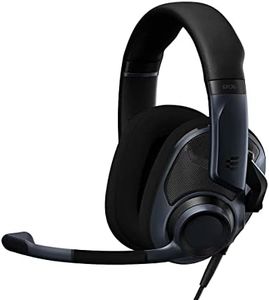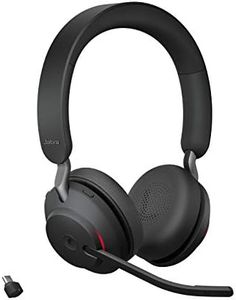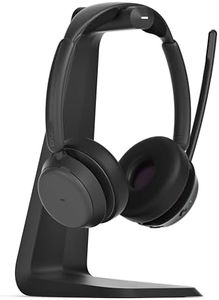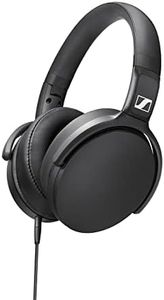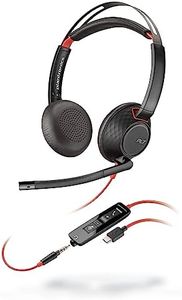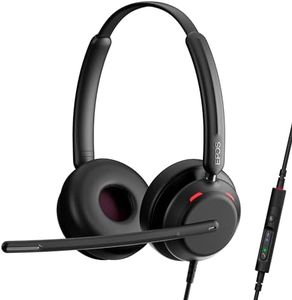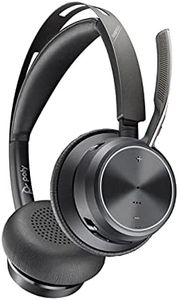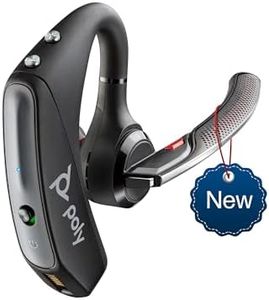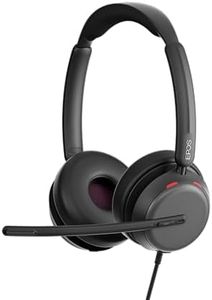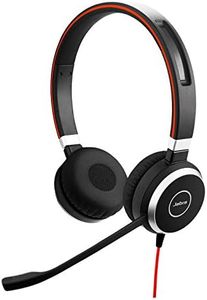We Use CookiesWe use cookies to enhance the security, performance,
functionality and for analytical and promotional activities. By continuing to browse this site you
are agreeing to our privacy policy
10 Best Office Headsets
From leading brands and best sellers available on the web.Buying Guide for the Best Office Headsets
Choosing the right office headset can make a big difference in your work comfort, communication clarity, and overall productivity. With so many models available, it’s important to focus on the features that will meet your specific needs, whether you work in a quiet room, a bustling open office, or split your time between calls and other tasks. Consider where and how you’ll use your headset: Will you need to walk around while on calls? Do you participate in video conferences often, or do you mostly handle phone calls? Are background noises an issue? Thinking about these key questions can help guide your decision and ensure you pick a headset that truly supports your work style.Wired or WirelessThis spec refers to whether the headset connects to your device using a cable or via wireless technology like Bluetooth or a USB dongle. Wired headsets typically offer reliability and unlimited use without recharging, while wireless headsets provide freedom of movement and a cleaner workspace. If you tend to stay at your desk and don’t want to worry about charging, a wired option might be best. If you move around a lot during calls or prefer less cable clutter, go with wireless. However, remember to consider battery life and potential interference with other devices if you choose wireless.
Microphone Quality and Noise CancellationThis describes the microphone’s ability to pick up your voice clearly and reduce background noises around you. Headsets with good noise-cancelling microphones are especially useful in open offices with lots of activity, ensuring your voice is heard clearly without distractions. If you’re mostly in a quiet room, a standard microphone will suffice, but if you often deal with noisy environments or participate in important calls where clarity matters, opt for strong noise-cancelling features.
Wearing StyleOffice headsets come in different wearing styles such as over-the-head, on-ear, in-ear, or single-sided (monaural) versus double-sided (binaural). Over-the-head and double-sided headsets provide more comfort for long use and better block out office noise. On-ear and in-ear options are lighter and can be less obtrusive. If you spend many hours each day on calls, prioritize comfort with padded, adjustable headbands. Choose the style that fits your work habits and comfort preferences.
CompatibilityCompatibility refers to whether the headset works easily with your computer, phone, or communication software such as Teams or Zoom. Some headsets are optimized for specific platforms or operating systems, while others are more general. Before buying, make sure your headset will connect properly to your main devices, whether that’s a desktop, laptop, or mobile phone, and check if you need features like USB, Bluetooth, or a traditional headphone jack.
Sound QualityThis spec relates to how clearly you can hear others and how natural their voices sound. While most headsets offer decent call quality, some provide enhanced sound for listening to music or media as well. If you often participate in long calls, meetings, or webinars, look for a headset with clear and balanced audio reproduction. If you also want to use your headset for music during breaks, seek options that specify good audio performance for both speech and media.
Controls and FeaturesHeadsets can have built-in controls for adjusting volume, muting your mic, or answering and ending calls. Some models have features like busy lights to show when you’re on a call, or voice prompts for easier use. If you value convenience and speed in handling calls, look for intuitive, easy-to-reach controls and any smart features that could make your day smoother.
Battery Life (for wireless headsets)Battery life tells you how long you can use a wireless headset before it needs to be recharged. Some last only a few hours, while others can handle a full workday or more. If your workday consists of back-to-back calls, look for a headset with enough battery to avoid recharging interruptions.
Weight and ComfortThis is about how heavy the headset feels and how comfortable it is over many hours. Lightweight designs and soft cushions help reduce fatigue for long stretches. Think about how long you typically wear a headset and choose one that feels comfortable for those periods, since discomfort can get in the way of your focus.
